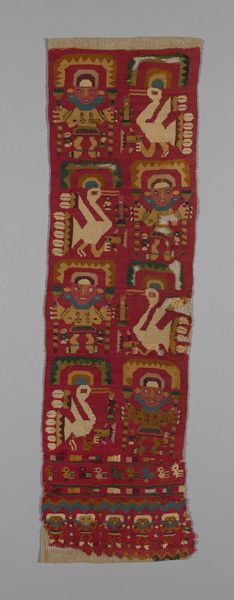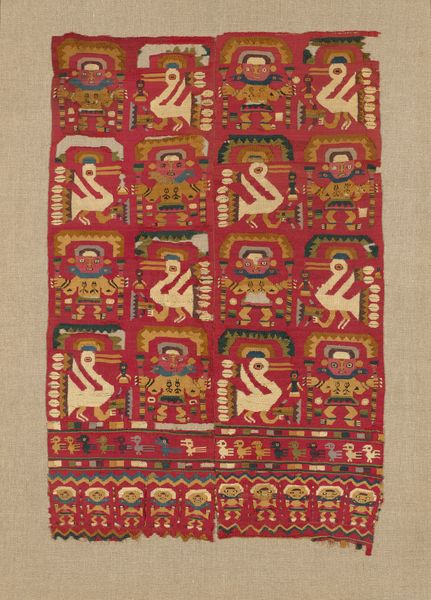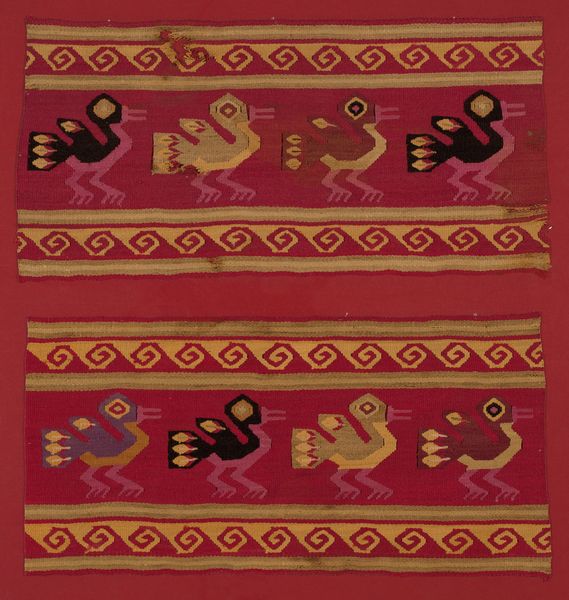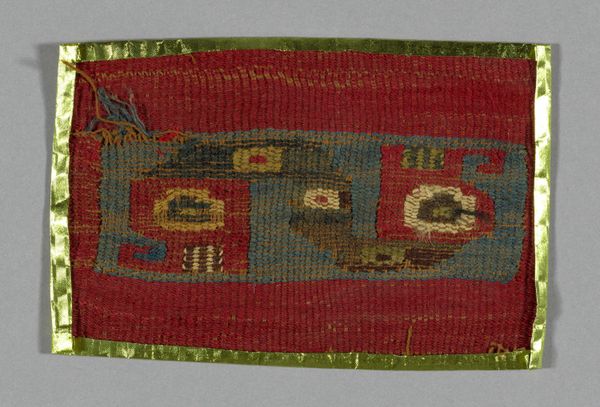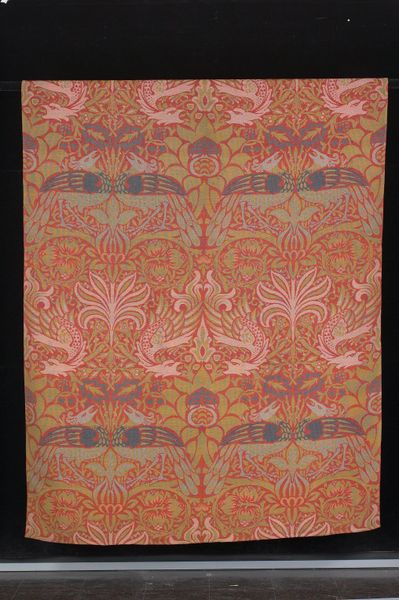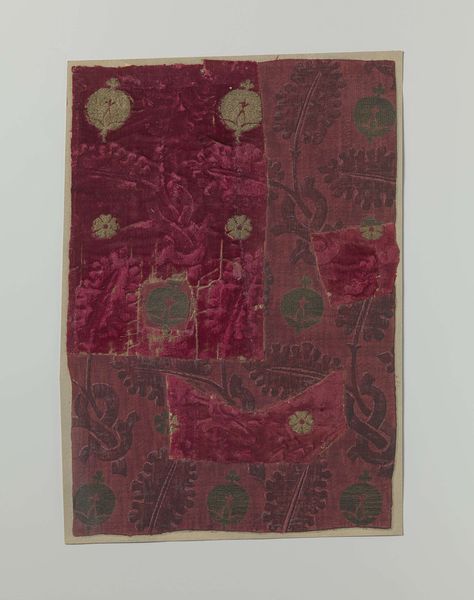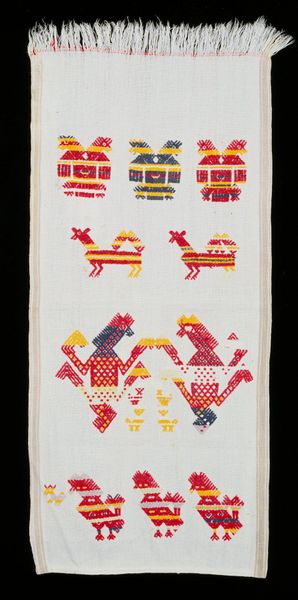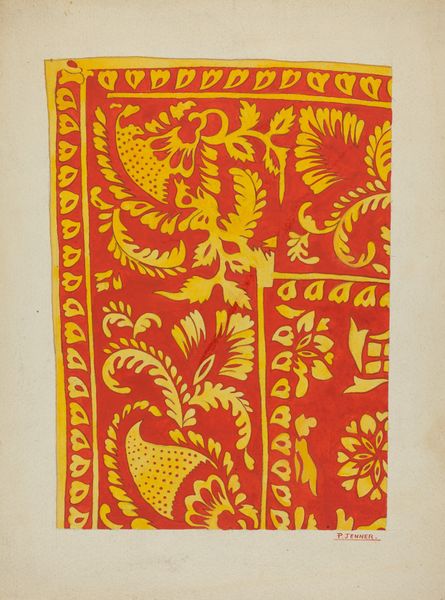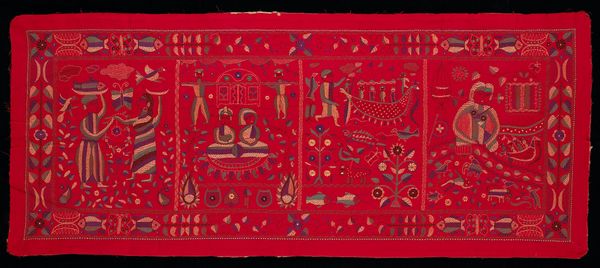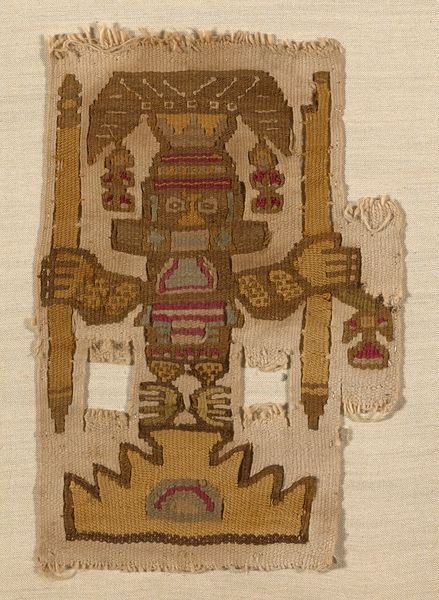
weaving, textile
#
pattern heavy
#
natural stone pattern
#
weaving
#
textile
#
figuration
#
pattern background
#
pattern design
#
repetitive shape and pattern
#
geometric
#
repetition of pattern
#
regular pattern
#
pattern repetition
#
layered pattern
#
repetitive pattern
#
indigenous-americas
Dimensions: 77.5 × 23.5 cm (30 1/2 × 9 1/4 in.)
Copyright: Public Domain
Editor: Here we have a textile Panel, created by the Lambayeque culture sometime between 1000 and 1476. It's made of woven wool. The vibrant red color really catches the eye, and the figures seem to alternate between humans and birds. What can you tell me about it? Curator: Well, consider the labor invested here. Every thread, every dye, a testament to skill and a communal process, no doubt. It's wool – a material readily available and thus deeply connected to the environment and resources exploited. It's more than just a pretty pattern. How does the textile challenge your idea of "art?" Editor: That's interesting – I always thought of weaving more as a craft, but the level of detail and the complex imagery make me rethink that. Was it considered art in its own time and culture, or was its function more practical? Curator: “Practical” and “art” aren’t mutually exclusive here. Function can inform its artistic value. This panel, given its presumed social context, probably held some ritual or symbolic meaning. These vibrant colors weren’t merely aesthetic choices. What could the repetitive motif of human figures alternating with bird symbols represent concerning the civilization that produced this textile? Editor: Maybe a connection between earthly life and the spirit world, or perhaps different social classes represented by the human and avian figures? This definitely shows how much labor and resources went into even one such work. Curator: Exactly. Each stage reveals the resources they held access to and what was deemed worthy of visual expression. Editor: Thinking about all that changes my perception of it completely. I appreciate the work far more when I understand the context. Curator: Indeed. Recognizing the materiality and methods of production helps us to question these false barriers, doesn’t it?
Comments
No comments
Be the first to comment and join the conversation on the ultimate creative platform.
